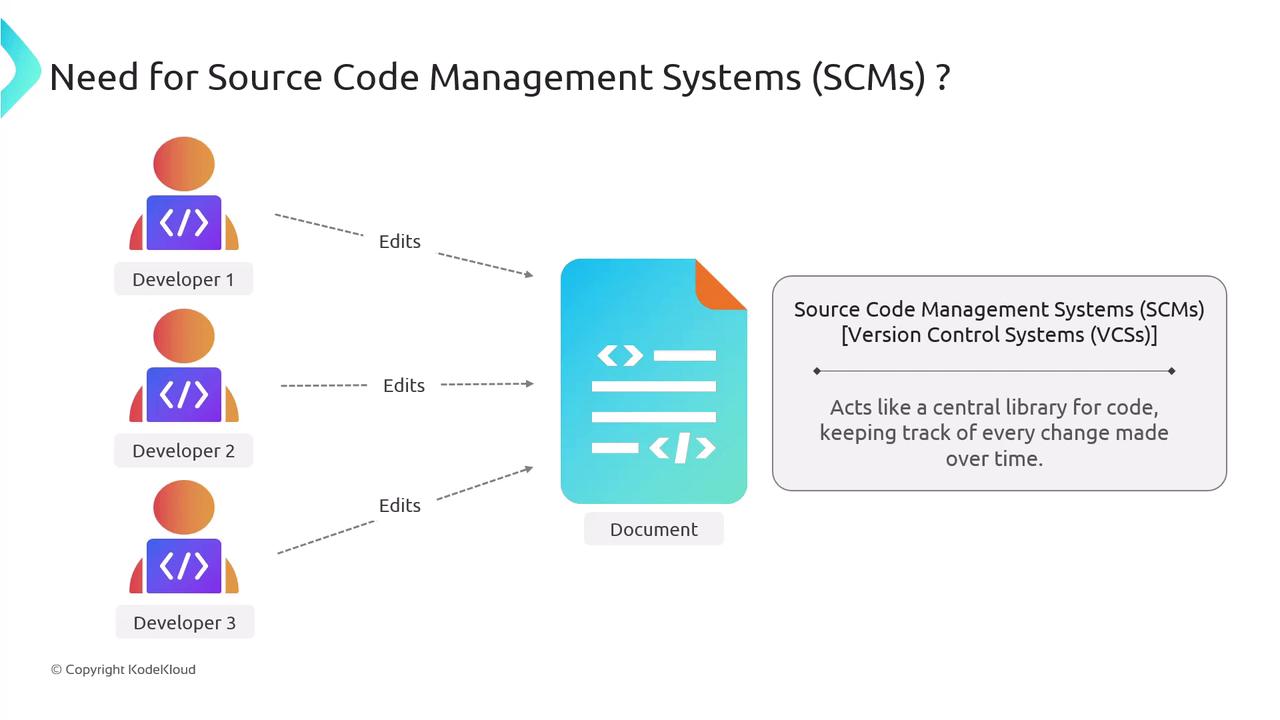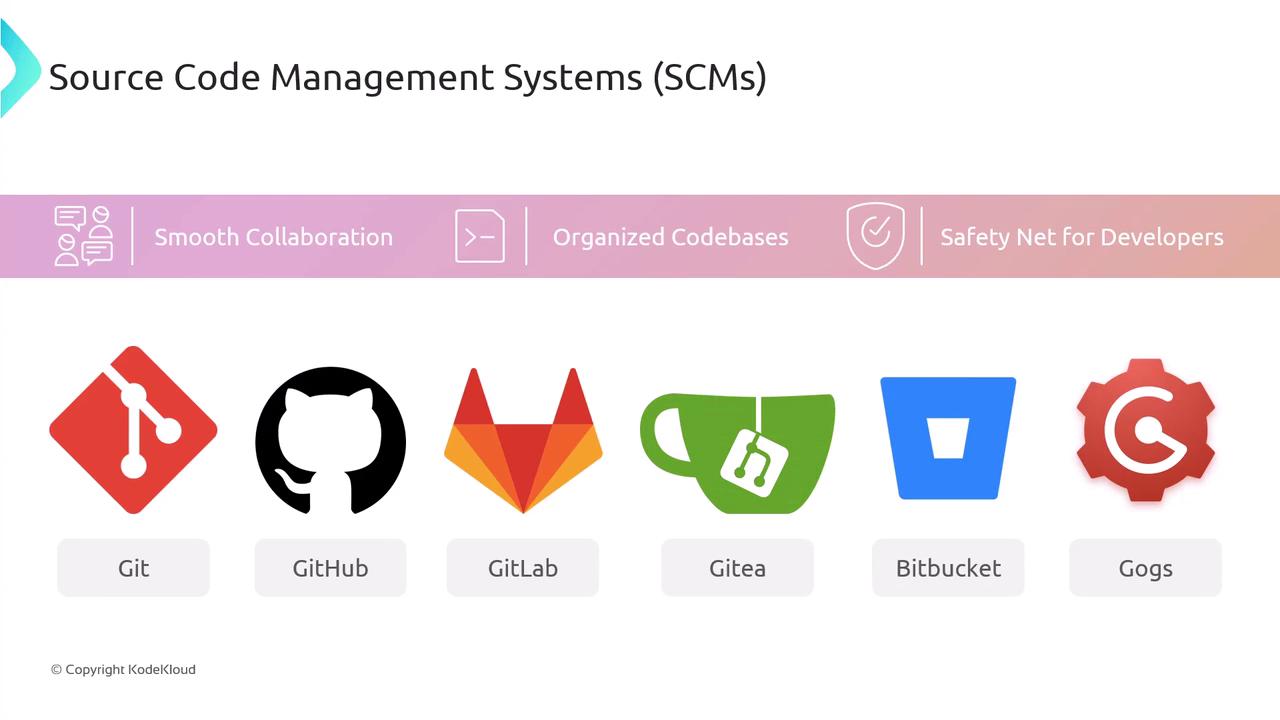Jenkins For Beginners
Introduction and Basics
Basics of SCM
Source Code Management (SCM) systems—also known as version control systems—are essential tools for modern software development. They provide a robust framework that prevents the chaos of multiple collaborators editing a single file simultaneously without any control. Instead, SCM systems act as a centralized repository, tracking every change made to the codebase and ensuring that all modifications are recorded.

Key Benefit
SCM systems enable team members to collaborate seamlessly while minimizing the risk of conflicting changes. Reviews can be performed on proposed modifications through inline comments, ensuring improved code quality before merging.
By using SCM systems, teams can simultaneously work on the same project without interference. These systems not only facilitate secure and efficient code sharing, but they also provide a comprehensive history of every alteration. This historical insight is invaluable: if errors are introduced, developers can quickly revert to a previous stable version.

In summary, SCM systems are the backbone of collaborative software development. They maintain organized codebases, ensure smooth cooperation, and act as a safety net by preserving every single change. Although Git is the underlying technology powering many SCM systems, there are popular platforms that extend this functionality, including GitHub, Bitbucket, GitLab, Gitea, and Gogs.

Further Learning
For more details on how SCM systems enhance collaboration and code integrity, check out the Kubernetes Basics and explore additional Kubernetes Documentation.
Watch Video
Watch video content